Papers by Montasir Al Hamad
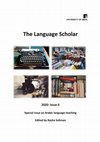
Leeds Language Scholar Journal, 2020
Editorial
This special issue of the Language Scholar is dedicated to Arabic language learning an... more Editorial
This special issue of the Language Scholar is dedicated to Arabic language learning and teaching in Higher Education. The idea of this issue stemmed out of a growing interest in researching Arabic language pedagogy and an increasing number of scholarship projects that investigate Arabic learning and teaching from different perspectives. Such work was witnessed in two international conferences that took place in March 2017 at the University of Leeds, then in April 2019 in Kings College, University of London. The conferences aimed to bring together researchers, scholars and teachers who share the interests and expertise in Arabic language pedagogy and who indeed presented an impressive range of contemporary topics that are being researched in order to advance the field of Teaching Arabic as a Second Language (TASL). In 2019 conference, the call for papers for this issue was announced and it has been a delight for us to receive a number of very interesting topics from colleagues in the UK and abroad who all strive to tackle issues faced by Arabic teachers and learners and suggest ways to overcome challenges, to develop and to promote the learning of Arabic in Higher Education.
This issue has six papers starting with Al-Hamad and Mohamed’s paper which builds on current research on error analysis with a focus on Arabic phonology and orthography. The paper presents interesting examples of phonological and orthographical errors made by 60 participants who are all English speakers studying Arabic in the UK and it showed an inclination to revert to the closest sounds to those in English language. The paper gives good insights to Arabic teachers when planning their teaching activities to support their students getting used to new phonological and orthographical systems. The second paper by Al Tubuly looks at the extent and range of cultural knowledge found in four common Arabic textbooks and shows that although these books dedicate some sections to present Arabic culture, they lack the focus on the deep culture that is needed for proper understanding of the Arabic speaking communities, their beliefs and lifestyles. The paper helps teachers to consider the missing elements of culture that they may need to supplement into their curriculums.
The third paper by Durkawi and Mouazen is a timely topic that looks at the application of the Integrated Approach (IA) in teaching and gives a practical guide to Arabic teachers who plan to use the IA in their programmes. The authors in this paper share examples of good practice and the challenges that they faced in applying the IA at different proficiency levels as well as a number of positive outcomes that they observed. Our fourth paper by El Essawi also provides analysis of Arabic textbooks on how much they focus on communication strategies. This is a topic that received very little attention in the field of TASL as communication strategies are limitedly found and even non-existent in some textbooks as revealed in this paper. El Essawi’s paper concludes with pedagogical suggestions on how to incorporate communication strategies in classroom activities and teaching materials for the objectives of orientation, exposure and practice.
The fifth paper here by Golfetto shifts the readers’ attention to the students as it investigates the learning experience of Arabic heritage learners. The study, which focused on heritage learners in Italian universities, presents an argument that supports the merging of heritage and non-heritage learning classes. It lists the benefits of merging them including the creation of a more homogenous and authentic learning environment that supports linguistic variation in the class and bridges learning gaps. Finally, the issue concludes with the sixth paper by Khalil providing a comparative linguistic description of Modern Standard Arabic and the Cairene dialect at phonological, lexical and grammatical levels with many examples from the two Arabic varieties. The paper is a useful reference to learners and teachers who incorporate linguistic variation in their programmes. It also provides a framework that can easily be followed by other researchers and scholars who wish to analyse other Arabic varieties.
We are grateful to all our authors who shared here their scholarship and research work and made it available to a wide range of readers. We are also deeply thankful to our reviewers, in alphabetical order, Yolanda Cerda, James Dickins, Hanem El-Farahaty, Giorgia Ferrari, Kassem Wahba and Shahira Yacout, who dedicated their time, efforts and knowledge to review these papers and provide invaluable advice. Huge thanks go to the Language Scholar managers Irene Addison-Child and Milada Walkova who put a lot of efforts on checking papers, communication with authors and reviewers and putting all of this work together. We hope that this special issue will provide a good reference for many Arabic teachers and researchers who strive to advance the field of Arabic language pedagogy.
Rasha Soliman (on behalf of the Language Scholar editorial team)
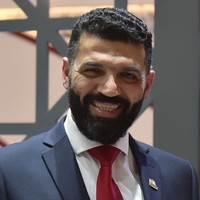
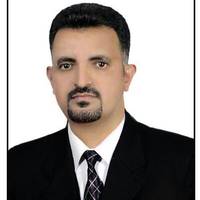

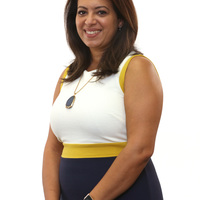
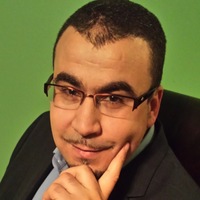
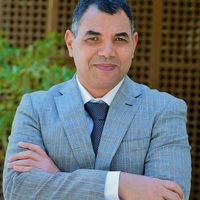

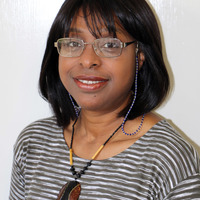
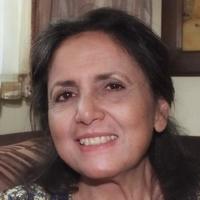
Uploads
Papers by Montasir Al Hamad
This special issue of the Language Scholar is dedicated to Arabic language learning and teaching in Higher Education. The idea of this issue stemmed out of a growing interest in researching Arabic language pedagogy and an increasing number of scholarship projects that investigate Arabic learning and teaching from different perspectives. Such work was witnessed in two international conferences that took place in March 2017 at the University of Leeds, then in April 2019 in Kings College, University of London. The conferences aimed to bring together researchers, scholars and teachers who share the interests and expertise in Arabic language pedagogy and who indeed presented an impressive range of contemporary topics that are being researched in order to advance the field of Teaching Arabic as a Second Language (TASL). In 2019 conference, the call for papers for this issue was announced and it has been a delight for us to receive a number of very interesting topics from colleagues in the UK and abroad who all strive to tackle issues faced by Arabic teachers and learners and suggest ways to overcome challenges, to develop and to promote the learning of Arabic in Higher Education.
This issue has six papers starting with Al-Hamad and Mohamed’s paper which builds on current research on error analysis with a focus on Arabic phonology and orthography. The paper presents interesting examples of phonological and orthographical errors made by 60 participants who are all English speakers studying Arabic in the UK and it showed an inclination to revert to the closest sounds to those in English language. The paper gives good insights to Arabic teachers when planning their teaching activities to support their students getting used to new phonological and orthographical systems. The second paper by Al Tubuly looks at the extent and range of cultural knowledge found in four common Arabic textbooks and shows that although these books dedicate some sections to present Arabic culture, they lack the focus on the deep culture that is needed for proper understanding of the Arabic speaking communities, their beliefs and lifestyles. The paper helps teachers to consider the missing elements of culture that they may need to supplement into their curriculums.
The third paper by Durkawi and Mouazen is a timely topic that looks at the application of the Integrated Approach (IA) in teaching and gives a practical guide to Arabic teachers who plan to use the IA in their programmes. The authors in this paper share examples of good practice and the challenges that they faced in applying the IA at different proficiency levels as well as a number of positive outcomes that they observed. Our fourth paper by El Essawi also provides analysis of Arabic textbooks on how much they focus on communication strategies. This is a topic that received very little attention in the field of TASL as communication strategies are limitedly found and even non-existent in some textbooks as revealed in this paper. El Essawi’s paper concludes with pedagogical suggestions on how to incorporate communication strategies in classroom activities and teaching materials for the objectives of orientation, exposure and practice.
The fifth paper here by Golfetto shifts the readers’ attention to the students as it investigates the learning experience of Arabic heritage learners. The study, which focused on heritage learners in Italian universities, presents an argument that supports the merging of heritage and non-heritage learning classes. It lists the benefits of merging them including the creation of a more homogenous and authentic learning environment that supports linguistic variation in the class and bridges learning gaps. Finally, the issue concludes with the sixth paper by Khalil providing a comparative linguistic description of Modern Standard Arabic and the Cairene dialect at phonological, lexical and grammatical levels with many examples from the two Arabic varieties. The paper is a useful reference to learners and teachers who incorporate linguistic variation in their programmes. It also provides a framework that can easily be followed by other researchers and scholars who wish to analyse other Arabic varieties.
We are grateful to all our authors who shared here their scholarship and research work and made it available to a wide range of readers. We are also deeply thankful to our reviewers, in alphabetical order, Yolanda Cerda, James Dickins, Hanem El-Farahaty, Giorgia Ferrari, Kassem Wahba and Shahira Yacout, who dedicated their time, efforts and knowledge to review these papers and provide invaluable advice. Huge thanks go to the Language Scholar managers Irene Addison-Child and Milada Walkova who put a lot of efforts on checking papers, communication with authors and reviewers and putting all of this work together. We hope that this special issue will provide a good reference for many Arabic teachers and researchers who strive to advance the field of Arabic language pedagogy.
Rasha Soliman (on behalf of the Language Scholar editorial team)
This special issue of the Language Scholar is dedicated to Arabic language learning and teaching in Higher Education. The idea of this issue stemmed out of a growing interest in researching Arabic language pedagogy and an increasing number of scholarship projects that investigate Arabic learning and teaching from different perspectives. Such work was witnessed in two international conferences that took place in March 2017 at the University of Leeds, then in April 2019 in Kings College, University of London. The conferences aimed to bring together researchers, scholars and teachers who share the interests and expertise in Arabic language pedagogy and who indeed presented an impressive range of contemporary topics that are being researched in order to advance the field of Teaching Arabic as a Second Language (TASL). In 2019 conference, the call for papers for this issue was announced and it has been a delight for us to receive a number of very interesting topics from colleagues in the UK and abroad who all strive to tackle issues faced by Arabic teachers and learners and suggest ways to overcome challenges, to develop and to promote the learning of Arabic in Higher Education.
This issue has six papers starting with Al-Hamad and Mohamed’s paper which builds on current research on error analysis with a focus on Arabic phonology and orthography. The paper presents interesting examples of phonological and orthographical errors made by 60 participants who are all English speakers studying Arabic in the UK and it showed an inclination to revert to the closest sounds to those in English language. The paper gives good insights to Arabic teachers when planning their teaching activities to support their students getting used to new phonological and orthographical systems. The second paper by Al Tubuly looks at the extent and range of cultural knowledge found in four common Arabic textbooks and shows that although these books dedicate some sections to present Arabic culture, they lack the focus on the deep culture that is needed for proper understanding of the Arabic speaking communities, their beliefs and lifestyles. The paper helps teachers to consider the missing elements of culture that they may need to supplement into their curriculums.
The third paper by Durkawi and Mouazen is a timely topic that looks at the application of the Integrated Approach (IA) in teaching and gives a practical guide to Arabic teachers who plan to use the IA in their programmes. The authors in this paper share examples of good practice and the challenges that they faced in applying the IA at different proficiency levels as well as a number of positive outcomes that they observed. Our fourth paper by El Essawi also provides analysis of Arabic textbooks on how much they focus on communication strategies. This is a topic that received very little attention in the field of TASL as communication strategies are limitedly found and even non-existent in some textbooks as revealed in this paper. El Essawi’s paper concludes with pedagogical suggestions on how to incorporate communication strategies in classroom activities and teaching materials for the objectives of orientation, exposure and practice.
The fifth paper here by Golfetto shifts the readers’ attention to the students as it investigates the learning experience of Arabic heritage learners. The study, which focused on heritage learners in Italian universities, presents an argument that supports the merging of heritage and non-heritage learning classes. It lists the benefits of merging them including the creation of a more homogenous and authentic learning environment that supports linguistic variation in the class and bridges learning gaps. Finally, the issue concludes with the sixth paper by Khalil providing a comparative linguistic description of Modern Standard Arabic and the Cairene dialect at phonological, lexical and grammatical levels with many examples from the two Arabic varieties. The paper is a useful reference to learners and teachers who incorporate linguistic variation in their programmes. It also provides a framework that can easily be followed by other researchers and scholars who wish to analyse other Arabic varieties.
We are grateful to all our authors who shared here their scholarship and research work and made it available to a wide range of readers. We are also deeply thankful to our reviewers, in alphabetical order, Yolanda Cerda, James Dickins, Hanem El-Farahaty, Giorgia Ferrari, Kassem Wahba and Shahira Yacout, who dedicated their time, efforts and knowledge to review these papers and provide invaluable advice. Huge thanks go to the Language Scholar managers Irene Addison-Child and Milada Walkova who put a lot of efforts on checking papers, communication with authors and reviewers and putting all of this work together. We hope that this special issue will provide a good reference for many Arabic teachers and researchers who strive to advance the field of Arabic language pedagogy.
Rasha Soliman (on behalf of the Language Scholar editorial team)